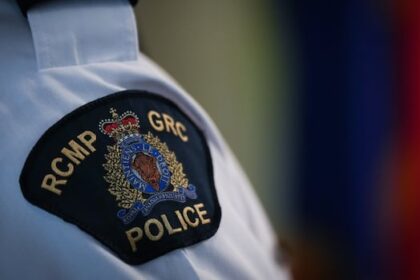ManitobaA yearlong pilot project that let Winnipeg firefighters and paramedics switch red lights to green has shown the technology can make emergency responses both faster and safer, according to a new city report.Firefighters’ union welcomes expansion of program, but cautions that staffing remains biggest issueCameron MacLean · CBC News · Posted: Sep 29, 2025 7:54 PM EDT | Last Updated: 6 hours agoA collision involving an ambulance and another vehicle on Maryland Street and Westminster Avenue is shown in this file photo from January 2022. The Winnipeg Fire Paramedic Service says it records a collision involving emergency vehicles every five to eight weeks. (Gavin Boutroy/Radio-Canada)A yearlong pilot project that let Winnipeg firefighters and paramedics switch red lights to green has shown the technology can make emergency responses both faster and safer, according to a new city report.Now, the City of Winnipeg plans to roll out the emergency vehicle pre-emption (EVP) system across the city, but the head of the firefighters’ union warns that staffing shortages remain the biggest obstacle to improving response times.”One of the clear benefits of the EVP system is that it allows emergency vehicles to maintain road speeds with little braking interruption,” program manager Linda Hathout wrote in the report, which will be discussed at the community services committee’s meeting next Monday.The city estimates the system reduces response times by 15 to 20 per cent, but the report notes that construction and roadway changes in the area means it was not possible to make a direct comparison with the period before the pilot project, Hathout wrote in the report.”It is faster and safer. Crews do not need to risk entering an intersection on a red light and navigate travelers trying to clear the route.”The pilot program ran from April 2024 to April 2025 at 17 intersections in Osborne Village and nearby routes. Nine fire and ambulance units from five stations were equipped with transponders that communicated with traffic lights, giving first responders the right of way while clearing vehicles and pedestrians out of their path.The Winnipeg Fire Paramedic Service says the results validate the system. The pilot project cost $78,000.The city plans to expand the program to 437 intersections — approximately 70 per cent of the city’s intersections. The upfront cost for the project is projected to be $1.8 million, with $200,000 in licensing and maintenance costs. WFPS records major crashes involving emergency vehicles about every five to eight weeks. In 2024, five such collisions sent staff to hospital and caused more than $250,000 in vehicle damage, including one fire truck being written off.”With this [system], it allows the emergency vehicles with that technology to be able to switch from red to green and allow them to ensure they can cross intersections of much at a much safer rate,” said Coun. Vivian Santos, chair of the community services committee.The city’s Traffic Signals Branch monitored the impact on regular drivers. While the busiest intersection, Osborne Street and River Avenue, averaged 13 pre-emption calls per day, engineers reported almost no lasting congestion. Most pre-emptions lasted less than 50 seconds before signals returned to normal.’Catching up with old technology,’ says unionBut the firefighters’ union cautions the system won’t fix deeper problems in Winnipeg’s emergency response.Nick Kasper, president of the United Firefighters of Winnipeg, says while the union supports EVP for safety reasons, he adds that the city’s response-time estimates aren’t proven.”They weren’t able to provide data showing a time savings … it is estimated, not a certainty,” Kasper said. He said the number of firefighters on duty has actually dropped since the 1970s — from 175 then to 167 today — despite significant population growth.Many other cities across the country already have emergency vehicle pre-emption systems, Kasper added.”This is nothing more than catching up with old technology,” he said.If approved in the city’s 2026 capital budget, installation would take two years. Crews would install in-vehicle units at the same time as scheduled radio upgrades.ABOUT THE AUTHORCameron MacLean is a journalist for CBC Manitoba living in Winnipeg, where he was born and raised. He has more than a decade of experience reporting in the city and across Manitoba, covering a wide range of topics, including courts, politics, housing, arts, health and breaking news. Email story tips to cameron.maclean@cbc.ca.
Saturday, 15 Nov 2025
Canada – The Illusion
Search
Have an existing account?
Sign In
© 2022 Foxiz News Network. Ruby Design Company. All Rights Reserved.
You May also Like
- More News:
- history
- Standing Bear Network
- John Gonzalez
- ᐊᔭᐦᑊ ayahp — It happened
- Creation
- Beneath the Water
- Olympic gold medal
- Jim Thorpe
- type O blood
- the bringer of life
- Raven
- Wás’agi
- NoiseCat
- 'Sugarcane'
- The rivers still sing
- ᑲᓂᐸᐏᐟ ᒪᐢᑿ
- ᐅᑳᐤ okâw — We remember
- ᐊᓂᓈᐯᐃᐧᐣ aninâpêwin — Truth
- This is what it means to be human.
- Nokoma











